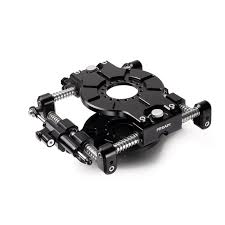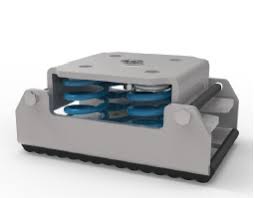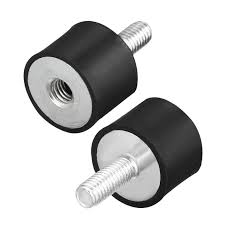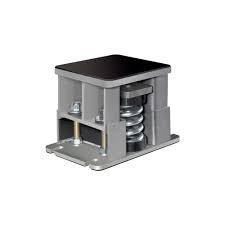Choosing the Right Vibration Isolation Mounts for Your Application
Vibration isolation mounts are a critical component in many industrial and commercial applications, providing crucial protection against the damaging effects of vibration and shock. Choosing the right vibration isolation mounts for your specific application is essential for ensuring maximum performance and longevity of equipment. In this article, we will explore the important factors to consider when selecting vibration isolation mounts, and how to ensure that you choose the right mounts for your specific application.
Choosing the right vibration isolation mounts for your application depends on several factors. This includes the frequency and amplitude of the vibrations, the weight of the equipment, and the environment in which it will be used. There are different types of isolation mounts, such as elastomeric mounts, air springs, and wire rope mounts, each with its own advantages and limitations. It is important to consider these factors and consult with a professional to determine the most suitable isolation mounts for your specific application. Incorrect selection of vibration isolation mounts can result in inadequate vibration control and potential damage to equipment. Therefore, it is essential to carefully assess the requirements and choose the right mounts for optimal performance.
Choosing the right vibration isolation mounts for your application involves considering various factors such as the frequency and amplitude of the vibrations, the weight and size of the equipment, and the environment in which it will be used. There are different types of isolation mounts, such as elastomeric mounts, air springs, and wire rope mounts, each with unique characteristics and performance attributes. It's crucial to carefully assess these factors and consult with a professional to determine the most suitable isolation mounts for your specific application. Incorrect selection of vibration isolation mounts can lead to inadequate vibration control and potential damage to equipment. Therefore, it is essential to make a well-informed decision to ensure optimal performance and equipment protection.
Understanding the Importance of Vibration Isolation Mounts

Vibration isolation mounts are essential in various industries to minimize the transmission of vibrations from machinery and equipment to the surrounding environment. These mounts are designed to absorb and dampen the vibrations to prevent damage to the equipment and to improve overall performance. They are commonly used in applications such as industrial machinery, HVAC systems, automotive engines, and electronic equipment. By using vibration isolation mounts, businesses can minimize noise and vibration levels, increase equipment longevity, and improve worker safety and comfort. These mounts are available in different materials and designs to suit specific requirements, and their effectiveness is crucial in maintaining the integrity and efficiency of equipment and structures in various industrial and commercial settings. Overall, understanding the importance of vibration isolation mounts is critical for ensuring smooth and efficient operations while reducing the negative effects of vibrations on both equipment and personnel.
How Vibration Isolation Mounts Work in Different Applications
vibration isolator selection guide

Vibration isolation mounts are used in a variety of applications to reduce the transmission of vibration and noise. In general, these mounts work by providing a barrier between the vibrating source and the surrounding environment. They are designed to absorb and dampen the vibrational energy, preventing it from being transferred to nearby equipment or structures. In industrial applications, vibration isolation mounts are commonly used to isolate machinery such as pumps, motors, and compressors from the surrounding building structure. This helps to reduce noise and minimize the potential for structural damage caused by vibration. In the automotive industry, vibration isolation mounts are used in vehicle suspension systems to dampen road-induced vibrations and provide a smoother ride for passengers. These mounts also help to protect sensitive components from the damaging effects of vibration. In the aerospace and defense sectors, vibration isolation mounts are critical for protecting delicate electronic equipment and instruments from the harsh vibrational environment experienced during flight or in military operations. Overall, vibration isolation mounts are essential components in a wide range of applications, providing effective protection from the negative effects of vibration and noise.
The Benefits of Using Vibration Isolation Mounts in Machinery

Vibration isolation mounts help to reduce the transmission of vibration and noise from machinery to surrounding areas. This can result in a quieter and more comfortable work environment, as well as prevent damage to other equipment or structures. Isolation mounts also help to extend the lifespan of machinery by reducing the wear and tear caused by excessive vibration. Additionally, they can improve the accuracy and quality of production processes by minimizing the impact of vibration on sensitive equipment. Overall, using vibration isolation mounts in machinery can lead to cost savings, improved productivity, and a safer work environment.
Choosing the Right Vibration Isolation Mounts for Your Equipment<
vibration isolation types/h2>

When choosing the right vibration isolation mounts for your equipment, it is important to consider the weight and size of the equipment, as well as the frequency and amplitude of the vibrations it produces. Additionally, the environment in which the equipment will be operating should be taken into account, as well as any specific requirements for noise reduction. It is also important to consider the type of isolation material, such as rubber or neoprene, and the design of the mounts themselves. Consulting with a professional or supplier who specializes in vibration isolation can also help ensure that you choose the right mounts for your specific needs.
Common Mistakes to Avoid When Installing Vibration Isolation Mounts
1. Incorrectly selecting vibration isolation mounts for the specific application and equipment can result in inadequate vibration isolation. It is crucial to carefully evaluate the requirements and characteristics of the equipment and environment to choose the most suitable mount. 2. Improper installation of vibration isolation mounts can lead to reduced effectiveness and premature failure. It is important to follow the manufacturer's instructions and consider factors such as load capacity, proper alignment, and adequate clearance. 3. Neglecting to regularly inspect and maintain vibration isolation mounts can result in decreased performance and potential safety hazards. Regularly inspecting for signs of wear, damage, or misalignment, and performing necessary maintenance can help ensure optimal performance and longevity. 4. Underestimating the importance of proper isolation system design and engineering can lead to subpar results. It is essential to involve experienced professionals in the design and installation process to ensure the best possible outcome. 5. Overlooking the need for customization and specialized solutions for unique or challenging applications can lead to inadequate vibration control. In some cases, off-the-shelf vibration isolation mounts may not provide the necessary level of isolation, and custom solutions may be required to address specific challenges.
Maximizing the Performance of Vibration Isolation Mounts
To maximize the performance of vibration isolation mounts, it is important to consider factors such as the weight and distribution of the equipment being supported, the frequency and amplitude of the vibrations, and the type of isolator being used. Additionally, ensuring proper installation and maintenance of the mounts is crucial for optimal performance. Regular inspections and adjustments may be necessary to account for any changes in equipment or operating conditions. It is also important to follow manufacturer recommendations for load capacity and other technical specifications to maximize the effectiveness of the vibration isolation mounts.
The Future of Vibration Isolation Mounts in Technology
Vibration isolation mounts play a crucial role in technology by damping unwanted vibrations and ensuring the stability and performance of various equipment and machinery. As technology continues to advance, the demand for more efficient and effective vibration isolation mounts is expected to grow. This has led to ongoing developments in material science, engineering, and design to create mounts that can provide better vibration control while also being compact, lightweight, and durable. In the field of consumer electronics, vibration isolation mounts are essential for reducing the impact of internal and external vibrations on the performance of delicate electronic components such as hard drives, microphones, and cameras. In industrial settings, vibration isolation mounts are vital for protecting heavy machinery and sensitive equipment from the effects of vibration, which can cause malfunctions, damage, or safety hazards. With the increasing integration of technology into various aspects of our lives, from transportation to medical devices to infrastructure, the need for reliable vibration isolation solutions will only continue to grow. Innovations in this area will likely focus on developing mounts that can effectively isolate vibrations across a wider range of frequencies and amplitudes, as well as in more challenging environmental conditions. Additionally, advancements in smart materials and sensor technologies may enable the creation of adaptive vibration isolation systems that can automatically adjust their properties in response to changing conditions. Overall, the future of vibration isolation mounts in technology is likely to involve further advancements in materials, design, and integration, leading to more effective and versatile solutions for controlling and managing vibration in a wide range of applications.
Comparing Different Types of Vibration Isolation Mounts
Vibration isolation mounts are used to dampen and isolate vibrations and shocks in a variety of applications, including industrial machinery, automotive systems, and electronic equipment. There are different types of vibration isolation mounts available, each with its own advantages and drawbacks. One common type of vibration isolation mount is the rubber mount, which uses elastomeric material to absorb and reduce vibrations. These mounts are relatively inexpensive and provide good isolation for high frequency vibrations, but may not be as effective for low frequency vibrations or large amplitude shocks. Another type of vibration isolation mount is the spring mount, which uses metal springs to provide isolation. Spring mounts are often used for heavy machinery and equipment, as they can handle a larger load capacity than rubber mounts. However, spring mounts may not be as effective for high frequency vibrations and can be more prone to resonance issues. Pneumatic mounts use air or gas to provide isolation and damping of vibrations. These mounts can be effective for a wide range of frequencies and provide a high level of vibration isolation, but they can be more complex and expensive than rubber or spring mounts. Finally, wire rope mounts use multiple strands of wire rope to provide isolation, often for very heavy loads or extreme environmental conditions. These mounts are durable and can provide effective isolation for a wide range of frequencies, but may be more expensive and difficult to install than other types of mounts. When comparing different types of vibration isolation mounts, it is important to consider the specific application, including the frequency and amplitude of vibrations, the weight and size of the equipment, and any environmental factors that may impact the performance of the mounts. Additionally, consider the cost, installation requirements, and maintenance needs of each type of mount to determine the best option for your specific needs.
In conclusion, choosing the right vibration isolation mounts for your specific application is crucial in ensuring the optimal performance and longevity of your equipment. By understanding the different factors that affect the selection of vibration isolation mounts, such as the environment, load capacity, and frequency range, you can make an informed decision that meets your specific needs. With the right vibration isolation mounts in place, you can effectively minimize the transmission of vibrations and extend the life of your equipment.
See also
https://www.mcmaster.com/vibration-isolators https://www.reidpipe.com/vibration-isolation